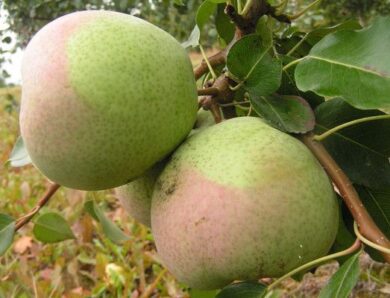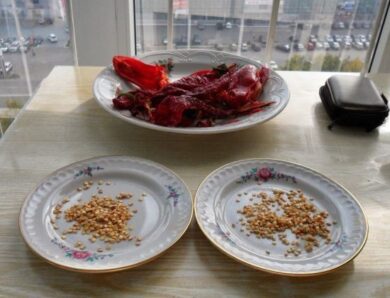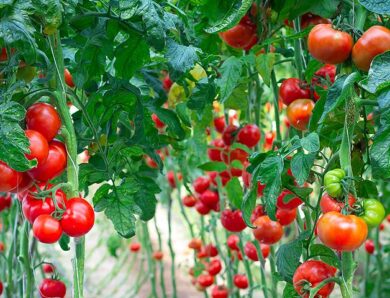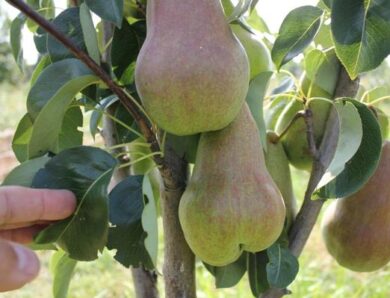Red early apple tree: description and characteristics of the variety
Early Red apple is a frequent visitor to small home gardens and cottages. This summer variety immediately after its appearance won the general popular love due to the excellent dessert taste and early ripening of the fruit. Unfortunately, according to many characteristics, red early apples are not suitable for industrial cultivation, but they are among the first to appear on our table, and ornamental apple trees do not take up much space on the site and can become a real decoration of the garden.
Variety description
The Red Early apple variety was bred by a group of VNIIS breeders. Michurina by crossing the ancient Canadian variety Melba with a fairly hardy domestic variety Spring. From his parents, the new hybrid inherited all the best qualities except frost resistance. For this reason, he could not take root in regions with severe winters, but feels great in the southern and temperate-continental climate.
Trees of this variety differ in small force of growth and the compact sizes. The crown is neat, medium density, round shape, with age it becomes more extensive, but easily corrected by forming pruning. The branches are located to the trunk at almost a right angle. Bark brown with a slight yellowish tinge, young shoots pubescent. The leaves are large, on long stalks, without stipules. Apple trees bloom in early May, flowers are average, white color, in the bud stage pink.
The fruits are not large (75-90 G), however have a very vivid external description. They are rounded or truncated-conical, correct aligned shape, with a smooth surface. The skin is light yellow, until the moment of removable maturity is covered with a dark red blush with a thick waxy coating, which makes the fruit especially attractive. The flesh of the apples is creamy, reddish under the skin, medium density, very juicy, pleasant dessert taste (sugar 10,7%, acids - total 0,58%).
Main characteristics
Early red is an annual variety of early ripening - the fruiting period begins in late July and lasts until mid-August. Apples ripen unevenly, and ripe fruits crumble quickly, therefore, it is recommended to remove them from the tree earlier - let them lie down for a week, that their taste and aroma were fully shown. The main purpose of the fruit is to eat it fresh, however just plucked from the tree, they are ideal for making juices. Shelf life is short - in the refrigerator 3-4 weeks.
Early Red apples do not need pollination, begin to bear fruit early (on 4-5 year) and have good performance. The yield of one 7-year-old tree is about 27 kg It's not so much, but given the small size of apple trees and regular (without "rest") fruiting, quite good. Winter hardiness of the variety is average - without shelter frosty winter trees will not survive. Apple trees are often susceptible to pests, in humid conditions are affected by scabies, powdery mildew.
Planting and care
As already mentioned, apple trees do not tolerate severe frosts, therefore, they should not be planted in regions with harsh climates. For planting it is necessary to allocate solar, unshaded place in the garden, preferably with fertile loose soil. The root system of seedlings is compact, therefore landing holes are dug shallow, put a layer of fertilizer on the bottom, then the tree is planted according to the standard scheme.
Apple trees do not require complex care. In the spring it is necessary to form a crown and fertilize with nitrogen mixture. In extreme heat, trees need watering. The whole season must be loosened and keep the stump circles clean, and in autumn cover it with a thick layer of mulch, so that the roots do not freeze in winter.
Pests and diseases
Red early apple trees are prone to various diseases and are often the object of increased attention from pests: moth, apple brass, moths, leafhoppers and aphids. To protect trees from these disasters, more attention should be paid to prevention. The simplest and most affordable method of protection is spraying apple trees with insecticides and copper-containing fungicides, example, Bordeaux liquid or copper sulfate. Processing is carried out 2-3 times per season: be sure to bud, then before flowering and after harvest.
If the apple trees still got sick, treatment depends on the type of disease:
- from powdery mildew effective preparations "Hom", "Score", "Fitoverm" (are applied according to the instruction);
- from scabies you can use the drug Topaz or colloidal sulfur;
- in case of fruit rot it is necessary to remove damaged fruits in time.
Pros and cons
The advantages of the Red Early include the following qualities:
- compactness and decorativeness of apple trees;
- bright beautiful coloring of fruits;
- wonderful dessert taste;
- good resistance to heat and drought;
- early maturation (almost in mid-summer).
There are no less shortcomings in the variety, than benefits:
- small fruits, which when overloaded with crops become even smaller;
- uneven ripening and shedding of apples;
- low yield;
- short shelf life of fruits;
- low winter hardiness;
- medium resistance to diseases and pests.
Despite the large number of shortcomings, reviews of gardeners and consumers about this variety are the most positive. Many people like the refreshingly sweet taste of the fruit, and let them not be suitable for commercial cultivation, but for small private farms it is a great opportunity to eat the first apples. And competent care of trees will make weaknesses of a grade less significant and will allow to enjoy tasty and rich harvest..
Video "Rules of care for apple trees"
In this video you will learn about it, how to properly care for apple trees in the garden.




